When it comes to Japanese watchmaking, two names often stand out for their quality, innovation, and affordability: Orient vs Seiko. Both brands boast rich histories and a strong following among horology enthusiasts, but choosing between them can be challenging. While Seiko is renowned worldwide for its technological advancements and wide range of collections, Orient offers exceptional craftsmanship and value, often appealing to those seeking mechanical timepieces with a classic touch.
In this post, we’ll delve into the ultimate comparison between Seiko vs Orient watches, exploring their histories, design philosophies, technological innovations, and more. Whether you’re a seasoned collector or a casual buyer looking for your next timepiece, this guide aims to provide you with all the information you need to make an informed choice. Let’s embark on this journey and uncover what makes each brand unique and which one might be the best fit for you.
The relationship between Orient and Seiko
Orient and Seiko, two venerable names in the watch industry, have a more interconnected history than many might realize. While both brands are distinct in their branding and product offerings, Orient is actually a subsidiary of Seiko Epson, a company within the larger Seiko Group. This relationship was solidified in 2009 when Seiko Epson acquired full ownership of Orient. The acquisition brought Orient under the umbrella of the Seiko Group, a conglomerate that includes Seiko Watch Corporation and Seiko Instruments, among others.
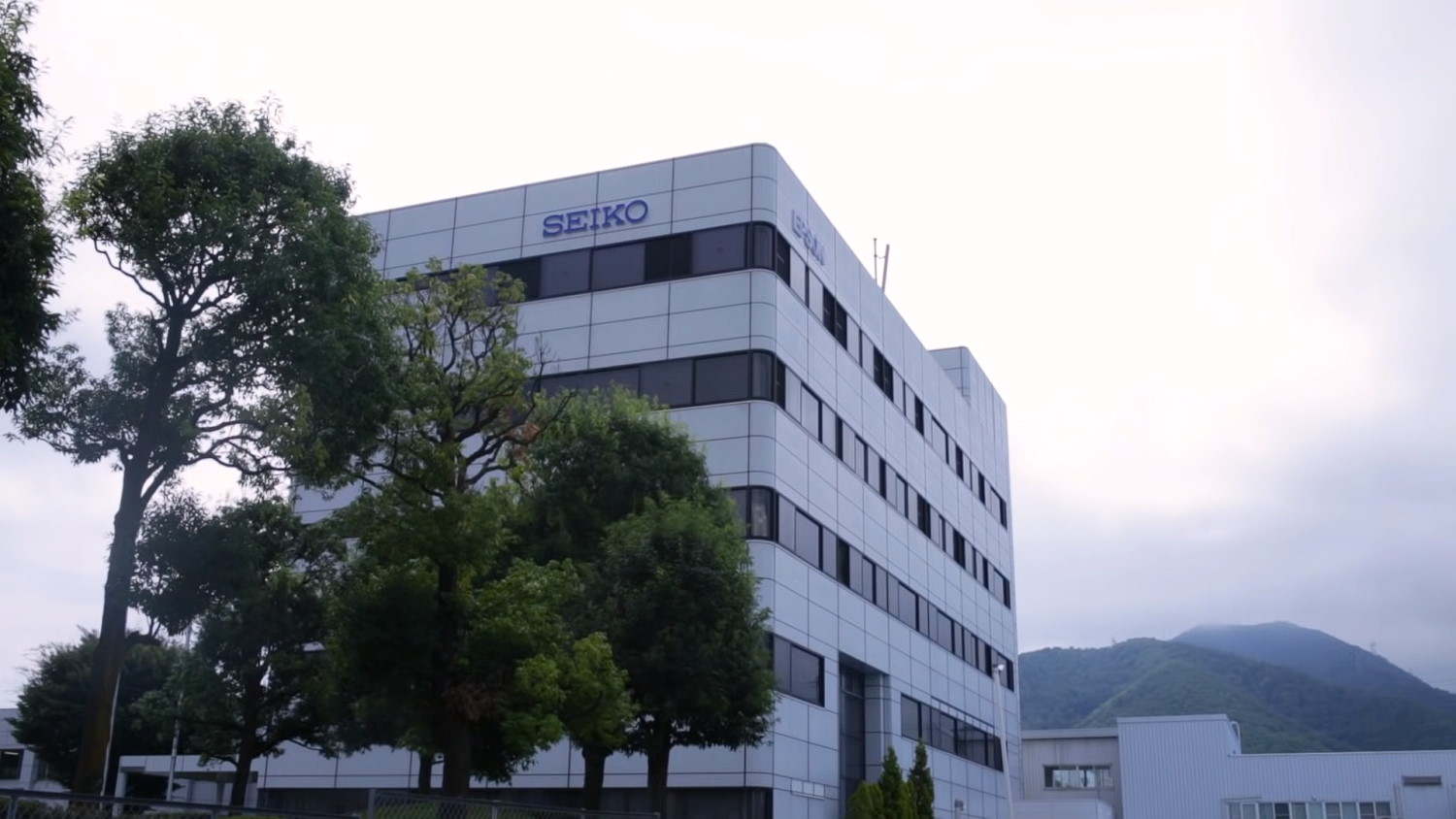
Related Post
Explore where Seiko watches are made.
The Seiko Group, known for its innovative approach and extensive portfolio in the horological world, has leveraged Orient’s strengths, particularly in producing affordable mechanical watches. This corporate synergy has allowed Orient to benefit from the broader technological resources and industry expertise available within the Seiko Group.
Operational independence
Despite the ownership, Orient maintains a significant degree of operational independence. This autonomy is crucial in preserving the brand’s unique identity and heritage. Orient continues to operate its own manufacturing facilities, design teams, and marketing strategies. The brand is known for producing a large portion of its components in-house, a practice that is a hallmark of quality in watchmaking.
This independence allows Orient to focus on what it does best: creating high-quality, mechanical watches with a strong emphasis on traditional craftsmanship. While Seiko often explores a broad spectrum of watch styles and technologies, including quartz, kinetic, and the innovative Spring Drive movements, Orient stays committed to its core offerings, primarily mechanical and automatic watches, thus catering to a specific segment of watch enthusiasts.
Shared technology and resources
Being part of the Seiko Group offers Orient access to advanced watchmaking technologies and expertise. While Orient is well-regarded for its in-house movements, the relationship with Seiko Epson allows for cross-pollination of ideas and technologies. For example, Orient can benefit from advancements in materials science and precision manufacturing techniques pioneered by Seiko.
However, it’s essential to note that while there is some sharing of resources, the two brands generally maintain distinct technological paths. Seiko, for example, is known for pioneering technologies such as the Spring Drive and Solar movements, which are not utilized by Orient. This differentiation helps each brand maintain its unique appeal and market positioning.
Brand positioning within the group
Within the Seiko Group, Orient and Seiko occupy different niches. Seiko, with its broad range of watches from entry-level to high-end luxury, appeals to a wide audience. It is known for both its cutting-edge technological watches and classic designs, serving diverse consumer needs.
Orient, on the other hand, positions itself as a brand that offers high-quality mechanical watches at accessible prices. It has a strong following among enthusiasts who appreciate traditional watchmaking techniques and value for money. This strategic positioning allows Orient to cater to a segment of the market that might be underserved by Seiko’s more technologically diverse offerings.
In summary, while Orient and Seiko are part of the same corporate family, they maintain distinct identities and operational independence. This relationship allows both brands to thrive by focusing on their strengths Orient with its commitment to affordable mechanical watches and Seiko with its innovative technologies and broad product range. Together, they offer a comprehensive range of choices for watch enthusiasts worldwide, each brand complementing the other within the Seiko Group’s extensive portfolio.
Design and aesthetics
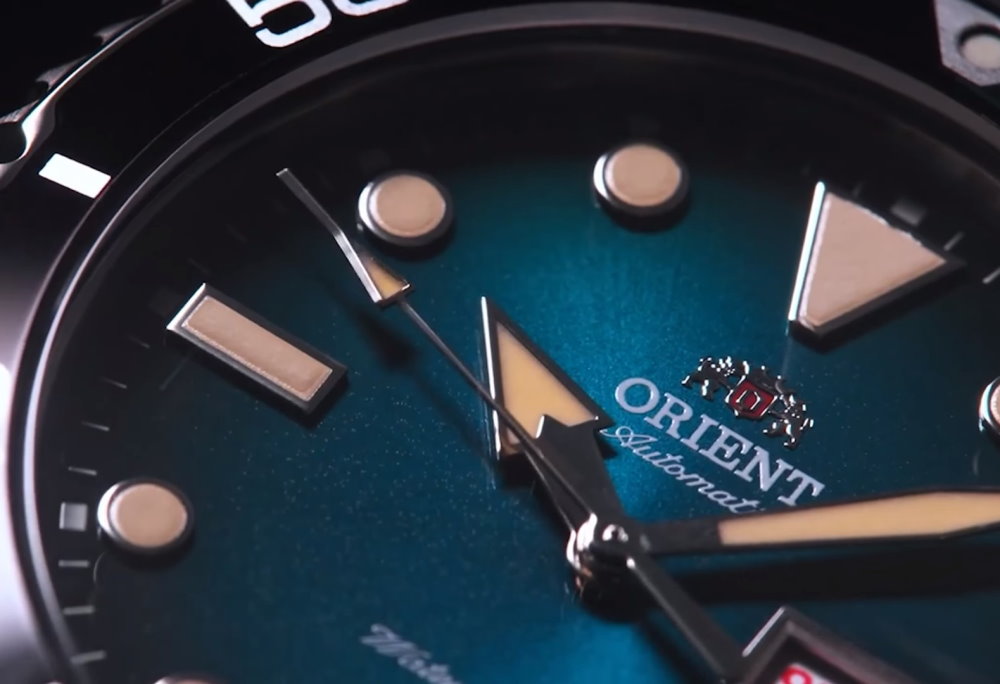
When it comes to design and aesthetics, Orient and Seiko offer distinct yet sometimes overlapping styles that cater to different tastes and preferences. Both brands have established their own identities within the watch industry, but there are key differences and similarities in their design philosophies that are worth noting.
Design philosophy: traditional vs. versatile
Orient is known for its traditional design ethos, often drawing inspiration from classic watch styles. The brand focuses heavily on elegance and simplicity, with a particular emphasis on dress watches. For example, the Orient Bambino series is celebrated for its clean lines, domed crystals, and vintage-inspired aesthetics. This approach appeals to those who appreciate timeless designs and understated elegance. Even in their sportier models like the Mako and Ray dive watches, Orient maintains a certain classic, restrained look.
In contrast, Seiko offers a broader range of designs, embracing both traditional and contemporary styles. Seiko’s design philosophy is highly versatile, covering everything from minimalist dress watches in the Presage line to rugged, functional designs in the Prospex series. The brand is not afraid to experiment with modern aesthetics, as seen in their innovative dial textures, color choices, and case designs. This versatility allows Seiko to cater to a wider audience, including those looking for both conservative and avant-garde designs.
Materials and craftsmanship
Both Orient and Seiko pride themselves on quality craftsmanship, but they approach materials and finishing with subtle differences. Orient typically focuses on offering high-quality materials at an affordable price point. Their watches often feature stainless steel cases, sapphire crystals, and well-executed dial details, such as applied markers and hands with fine finishes. However, Orient tends to be more conservative in its use of innovative materials, sticking to tried-and-true options.
Seiko, on the other hand, is known for pushing the envelope with materials and craftsmanship. The brand frequently incorporates advanced materials like titanium, ceramic, and proprietary alloys (such as the DiaShield coating for extra durability). Seiko also excels in detailed craftsmanship, with some models featuring intricate dial patterns, hand-applied finishes, and even zaratsu polishing on higher-end models. This attention to detail is evident across Seiko’s range, from the affordable Seiko 5 series to the luxury Grand Seiko models.
Aesthetic elements: modernity vs. tradition
While both brands offer a mix of modern and traditional elements, Orient leans more towards maintaining a traditional look. This is evident in their frequent use of Roman numerals, classical dial layouts, and vintage-inspired case shapes. Orient’s color palette also tends to be more conservative, favoring classic tones such as black, white, and blue, though they do explore richer tones in some collections.
Seiko showcases a more diverse range of aesthetic elements, including both modern and retro styles. The brand is not shy about incorporating bold color schemes, unconventional case shapes, and unique textures. Seiko’s Presage line, for instance, offers dials with enamel or urushi lacquer finishes, which provide a high-end look and feel. Meanwhile, the Seiko 5 series often experiments with playful colors and modern design cues, making these watches appealing to a younger demographic or those looking for a statement piece.
Movements and technologies
Both Orient and Seiko are renowned for their in-house watch movements, a hallmark of prestige and quality in the watchmaking world. While they share a commitment to in-house production, their approaches and technologies differ in key ways, reflecting each brand’s unique identity and market positioning.
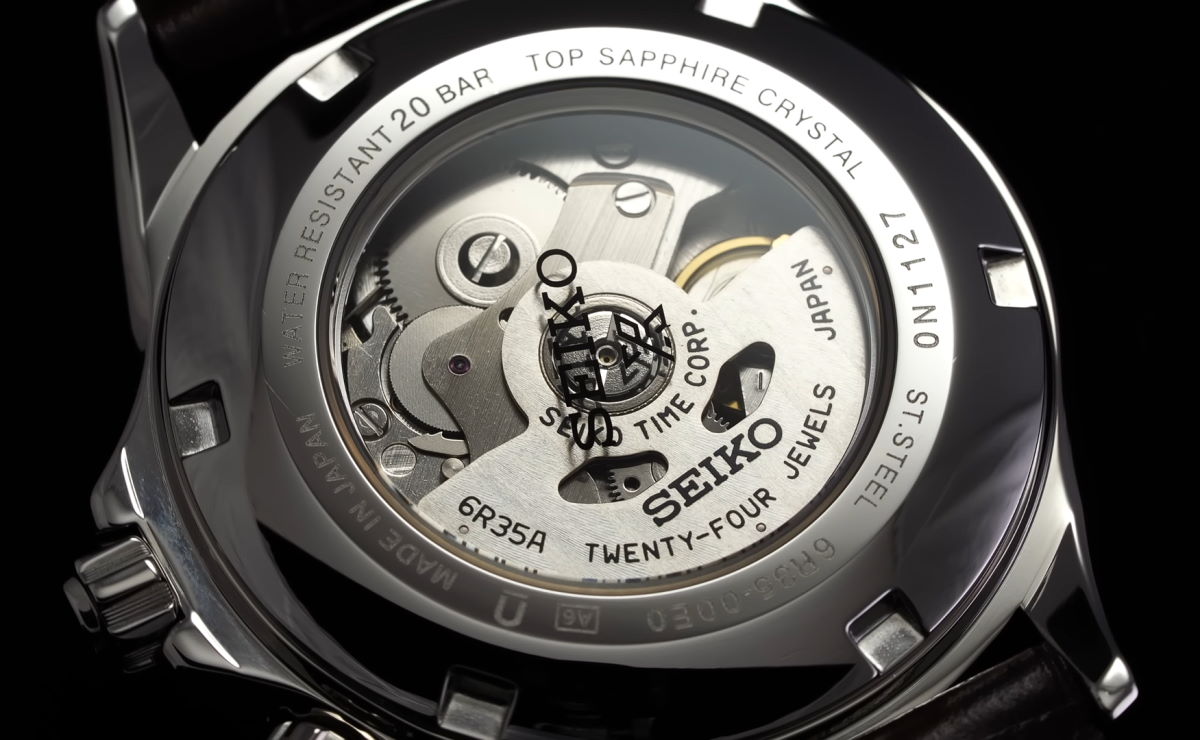
Related Post
Explore the top Seiko automatic movements for the price
In-house movement capabilities
Orient and Seiko both pride themselves on producing in-house movements, a practice that not only ensures quality control but also adds to the brands’ authenticity and appeal.
Orient is particularly noted for its mechanical movements, especially in the affordable to mid-range segments. The brand predominantly focuses on automatic and mechanical watches, with movements like the Orient Caliber F6922 and Caliber 46 series being well-regarded for their reliability and value. Orient’s movements are entirely produced in-house, including the assembly and regulation processes. This allows them to maintain consistent quality across their range, making them a favorite among enthusiasts who prefer mechanical timepieces over quartz.
Seiko, however, offers a broader spectrum of movements, ranging from mechanical and automatic to quartz, kinetic, and the innovative Spring Drive. Seiko’s expertise in movement technology is more extensive, with significant contributions to watchmaking innovation. For example, the Spring Drive movement, which combines mechanical watch elements with quartz accuracy, is a unique offering from Seiko, showcasing their ability to blend traditional craftsmanship with modern technology. Seiko also produces the widely respected 4R, 6R, and 8L mechanical movements, which are known for their durability and precision.
Technological innovations
Orient typically focuses on more traditional watchmaking techniques, rarely venturing into cutting-edge technology. This conservative approach resonates with their target audience, who often seek classic mechanical watches without the influence of electronic components. Orient’s most notable technological efforts have been in enhancing the reliability and efficiency of their movements, such as improving power reserves and the robustness of their calibers.
Seiko, in contrast, is a leader in horological innovation. The brand’s technological advancements include the development of the world’s first quartz watch, the Seiko Astron, and the aforementioned Spring Drive technology, which combines the continuous sweep of a mechanical watch with the precision of quartz regulation. Seiko’s Kinetic technology is another innovation, using the movement of the wearer to generate electrical energy, which is then stored in a rechargeable battery. These technologies position Seiko at the forefront of both traditional and contemporary watchmaking.
Precision and performance
In terms of accuracy and performance, Seiko generally has the upper hand, especially with its high-end models. The Spring Drive movement, for instance, offers unparalleled precision with an accuracy of ±1 second per day, far exceeding traditional mechanical movements. Seiko’s quartz movements are also among the most accurate in the industry, thanks to innovations like the Thermocompensated Quartz (TC) movements used in the Grand Seiko line.
Orient provides reliable accuracy within the context of mechanical watches, typically achieving a daily variance of -15 to +25 seconds for most models. While this level of precision is sufficient for many enthusiasts, it does not match the high accuracy of Seiko’s more advanced offerings. However, Orient compensates with robust construction and reliability, often delivering excellent value for the price.
Power reserve and durability
Both brands offer models with extended power reserves, but Seiko often leads in this area due to its technological innovations. Seiko’s movements, particularly in the Grand Seiko line, can offer power reserves of up to 72 hours or more. The brand’s focus on durability and longevity is also evident in features like DiaShield coatings and highly resistant materials, which protect their watches against wear and tear.
Orient generally provides power reserves in the range of 40 to 50 hours for their mechanical watches, which is quite respectable for the price range. Their movements are designed with durability in mind, often featuring robust components that ensure long-term reliability. While Orient does not emphasize extreme durability innovations as much as Seiko, their watches are well-regarded for their toughness and longevity.
Pricing
When choosing between Orient vs Seiko watches, understanding the price range and value for money each brand offers is crucial. Both brands are known for delivering quality watches, but they cater to different market segments and budgets. Here’s a comparative analysis of their price ranges and the value they provide.

Related Post
Learn whether you should buy an Orient watch.
Price range comparison
Orient generally positions itself in the affordable to mid-range market, making it an attractive choice for those seeking quality mechanical watches without a hefty price tag. The main brand offers a variety of watches, typically priced between $100 and $800. These include popular lines like the Orient Bambino, Mako, and Ray, which are well-regarded for their classic designs and reliable in-house movements.
The OrientStar sub-brand serves as Orient’s premium line, offering watches that range from $650 to $3,500. These watches often feature higher-quality materials, more complex movements, and intricate designs. While still considered affordable compared to high-end luxury brands, OrientStar models provide an elevated experience with a focus on craftsmanship and sophisticated aesthetics.
Seiko, in contrast, covers a much broader price spectrum. The brand’s offerings range from affordable entry-level watches, such as those in the Seiko 5 series, starting at around $100, to high-end luxury timepieces under the Grand Seiko label, which can exceed $10,000. However, focusing on the same segment as OrientStar, Seiko offers numerous models under the $6,000 mark. These include the Prospex and Presage lines, known for their blend of traditional Japanese craftsmanship and modern technology. Seiko’s extensive range allows them to cater to various segments, from casual wear to professional-grade dive watches and sophisticated dress watches.
Value for money
Orient excels in providing high-quality mechanical watches at a very competitive price. The brand’s value proposition lies in its ability to offer reliable in-house movements and solid build quality for a fraction of the cost of Swiss counterparts. This is particularly evident in their entry-level and mid-range watches, where buyers can find features like sapphire crystals, solid stainless steel cases, and reliable automatic movements—features often found in higher-priced watches from other brands. The OrientStar line, while more expensive, continues this trend by offering enhanced features and finishes, such as higher-grade materials and more intricate movement decorations, making them a strong contender in the sub-$1,000 category.
Seiko provides value through a combination of innovation, quality, and range. The brand’s extensive catalog includes everything from affordable quartz watches to advanced mechanical and Spring Drive models. For under $6,000, Seiko offers watches with high-quality finishes, innovative movements (such as the Spring Drive and Kinetic), and advanced features like ceramic bezels and high-intensity titanium cases. Seiko’s value is particularly notable in the Prospex and Presage lines, where buyers can access watches with exceptional craftsmanship, intricate dial work, and complex movements—often at prices significantly lower than comparable Swiss watches
Client focus
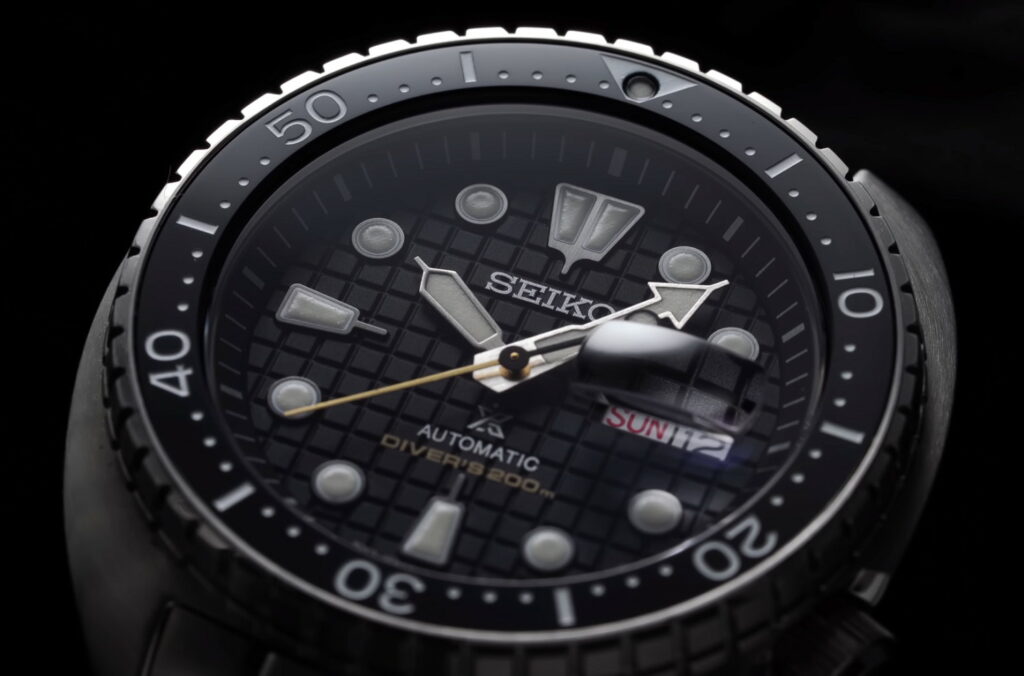
Both Orient and Seiko are esteemed Japanese watch brands, but they cater to different segments of the market and have distinct brand images. While both brands offer excellent value, Seiko’s range extends into the luxury segment with the Grand Seiko line, offering more advanced technologies and higher-end materials. In contrast, Orient focuses more on affordability and traditional mechanical watchmaking, with less emphasis on luxury.
Both brands share a commitment to in-house production and a Japanese heritage that emphasizes precision and quality. They are also both owned by the Seiko Group, yet operate independently, which allows them to develop distinct identities and product lines.
Target audience
Orient primarily targets budget-conscious consumers and young professionals looking for their first mechanical watch. Their lineup is particularly appealing to those who appreciate traditional watchmaking and seek good value for money. Typically, Orient’s customers are in their mid-20s to 40s. This group values affordable yet quality timepieces that offer both style and substance. The brand is known for its dress watches like the Bambino, which are popular among young professionals for their classic aesthetics and affordable pricing.
Compared to Orient, Seiko, with its broader range of products, targets a wider audience. This includes both entry-level buyers and seasoned collectors. Seiko’s offerings range from affordable models like the Seiko 5 series to high-end luxury watches under the Grand Seiko label.
Seiko’s customer base spans a broader age range in comparison with Orient, from late teens to seniors. The brand’s extensive catalog, which includes sports, diving, and dress watches, appeals to diverse preferences and budgets. This versatility allows Seiko to cater to both younger consumers looking for trendy designs and older, more affluent buyers seeking high-end craftsmanship.
Brand image
Orient is perceived as a brand that offers great value for money, often providing more features at lower price points compared to its competitors. It has a strong reputation for reliable in-house movements, particularly in the affordable segment. The brand is often seen as a hidden gem among watch enthusiasts, offering robust mechanical watches that perform well beyond their price tags.
On the other hand, Seiko enjoys a well-established reputation for innovation, quality, and reliability across various price ranges. It is known for pioneering quartz technology and has a strong heritage in both mechanical and quartz watchmaking. Seiko is also recognized for its diverse sub-brands, including the high-end Grand Seiko, which competes with luxury Swiss brands. This diversity allows Seiko to maintain a broad appeal and a strong presence in both the mainstream and luxury watch markets.
Customer reviews and satisfaction
Orient and Seiko are both well-regarded brands in the watch community, each with a strong base of dedicated enthusiasts. However, they are often perceived differently in terms of customer satisfaction, largely due to their distinct brand philosophies and product offerings.
Seiko enjoys a broad fan base, largely because of its extensive range of models that cater to various price points and styles. Seiko watches, especially the popular Seiko 5 series and the now discontinued SKX series, are praised for their reliability, robust build, and value for money. Enthusiasts on forums like Watchuseek frequently highlight the impressive durability and functionality of Seiko watches, particularly in their diver’s range, which includes models that meet the ISO 6425 standard for dive watches.
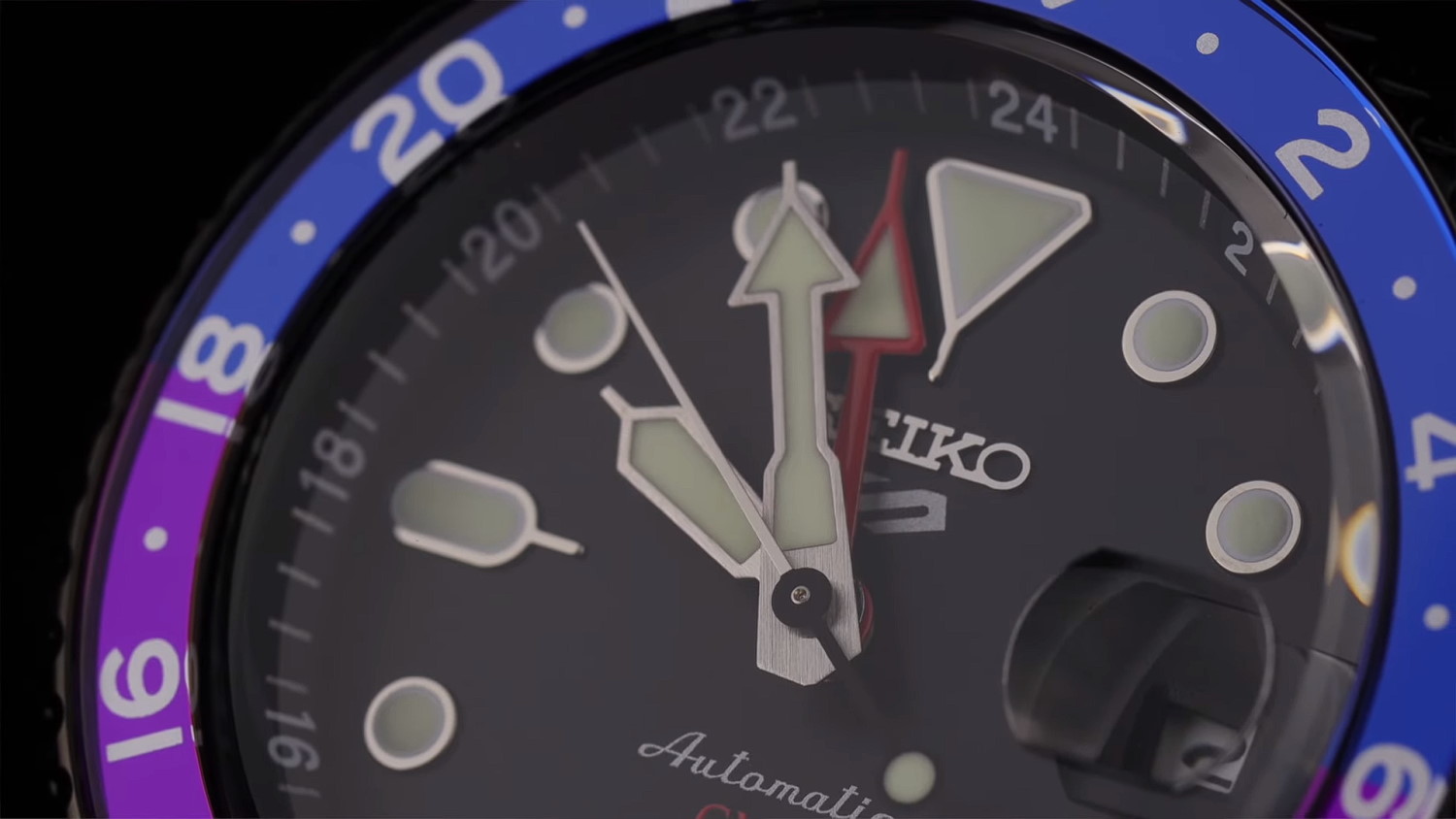
Related Post
Learn whether you should buy a Seiko watch.
Seiko’s customer satisfaction generally stems from their watches’ high accuracy and the brand’s reputation for innovation, particularly with their Spring Drive and Kinetic movements. However, some users express minor concerns about the inconsistency in lume quality and the feel of some of the entry-level models’ bracelets.
Orient, on the other hand, is celebrated for offering excellent value, particularly in their automatic watch range. Models like the Orient Mako and Ray are often compared favorably to Seiko’s offerings, especially for their affordability and in-house movements, which are unique at their price point. Customer reviews often highlight the quality of Orient’s mechanical movements and the appealing aesthetics of their watches. For instance, the Orient Mako 3 is noted for its well-executed design and reliable performance, though some users point out minor issues like the quality of the clasp or bezel action compared to more premium models.
Despite being part of the same parent company, Orient and Seiko offer distinct experiences. Seiko tends to cater to a broader audience with a wide variety of watches, from affordable mechanicals to high-end Grand Seiko models. Orient, by contrast, is more niche, appealing particularly to enthusiasts who value automatic watches and are looking for quality at an affordable price.
Overall, both brands enjoy high levels of customer satisfaction, but they cater to slightly different segments of the watch market. Seiko’s broader range and innovative technologies appeal to those looking for variety and cutting-edge features, while Orient’s strong value proposition attracts those seeking affordable, high-quality mechanical watches.
Collections comparison
Orient generally offers more affordable mechanical watches with a strong focus on value, while Seiko covers a broader market, including both affordable and luxury segments, with a significant emphasis on innovation and craftsmanship. Whether you’re looking for a reliable daily wearer or a sophisticated piece of horological art, both brands provide options across various styles and price points.
Orient Bambino vs Seiko Presage
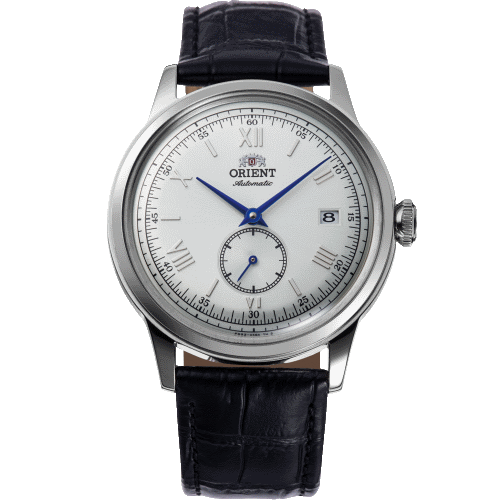
Orient Bambino
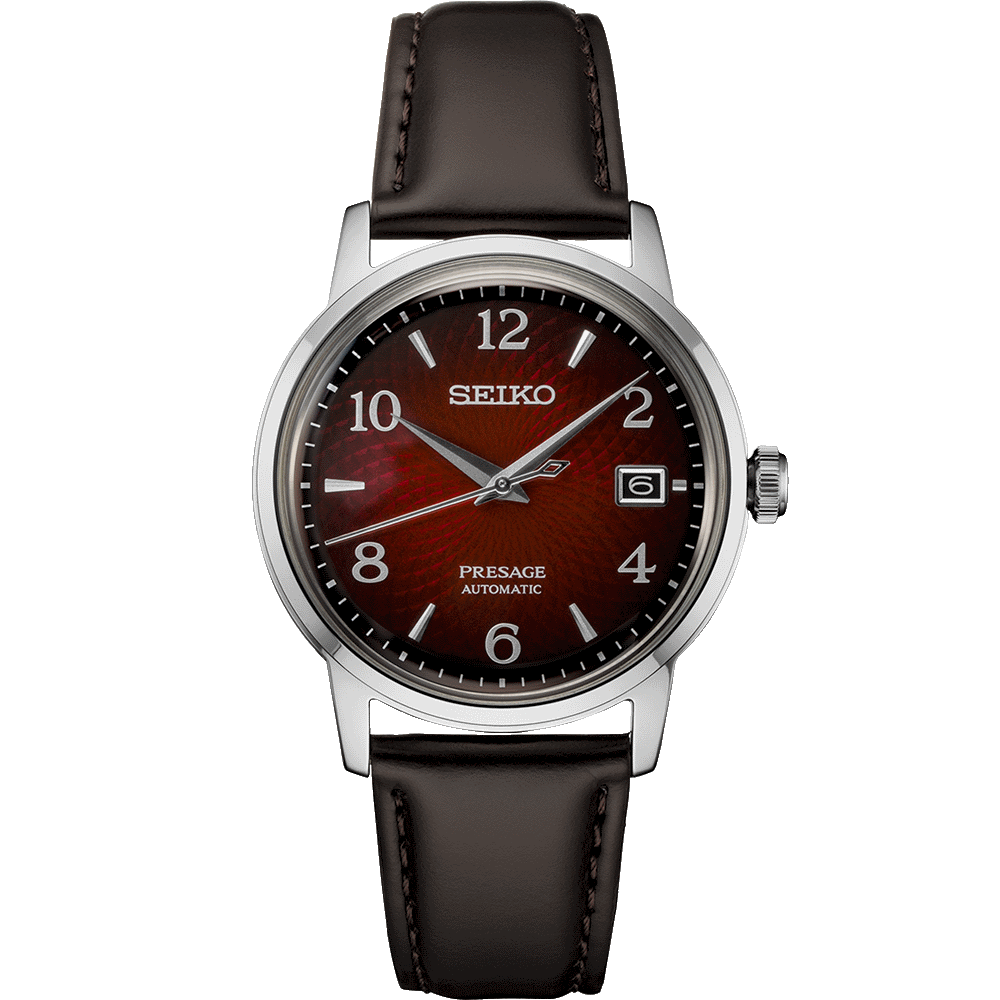
Seiko Presage
In terms of price range, the Orient Bambino is generally more affordable, priced between $100 and $300. This collection is well-regarded for providing excellent value for money, making it accessible for those new to mechanical watches or seeking a stylish yet affordable timepiece. On the other hand, the Seiko Presage collection spans from $300 to $1,500, offering a broader range of options that include higher-end materials and craftsmanship. This price range reflects the greater variety and complexity available in the Presage line.
Both brands pride themselves on using in-house movements. The Orient Bambino typically features Orient’s own automatic movements, such as the Caliber F67 series. These movements are reliable, offering hand-winding and hacking features, which are notable at this price point. The Seiko Presage collection also utilizes in-house movements, including the 4R and 6R series. These movements are recognized for their durability and precision, with the 6R35, for example, providing a substantial 70-hour power reserve, which is superior to what is generally found in the Bambino range.
| Characteristic | Orient Bambino | Seiko Presage |
| Water Resistance | 3 bar | 10 bar |
| Crystal | Mineral | Hardlex |
| Movement | F6724 | 4R36 |
| Price | $100-$300 | $300-$1,500 |
The main characteristics of these collections also highlight their different appeals. The Orient Bambino is known for its classic dress watch design, featuring domed crystals and minimalist, often vintage-inspired dials. These watches are elegant and simple, with variations including Roman numerals or baton indices and a range of dial colors. They generally feature domed mineral crystals and are sized around 40mm to 42mm, making them versatile for various wrist sizes.
Seiko Presage watches, however, offer a wider array of design choices and often incorporate traditional Japanese artistry. This includes unique dial treatments like enamel, porcelain, and textured finishes. Presage models frequently feature complications such as power reserve indicators, date displays, and even chronographs, enhancing their appeal to collectors and those seeking more complex timepieces. The collection often uses sapphire crystals, which provide better scratch resistance compared to the mineral glass commonly used in the Bambino series.
Orient Mako vs Seiko Prospex
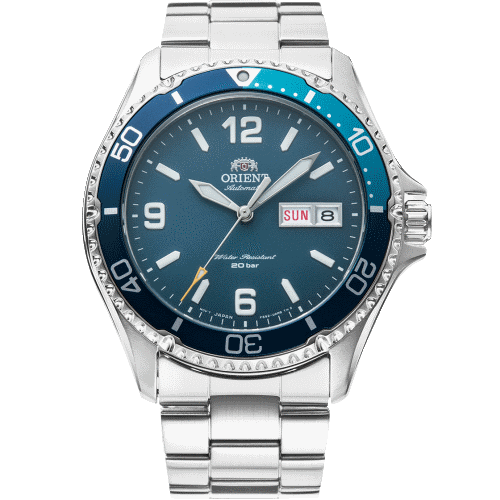
Orient Mako III
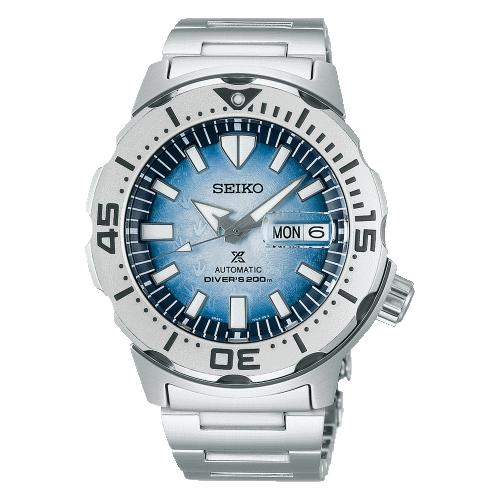
Seiko Prospex
The Orient Mako series is generally more affordable, with prices typically ranging from $150 to $300. This makes it a popular choice for those looking for a quality dive watch without breaking the bank. The Seiko Prospex collection, on the other hand, spans a much broader price range. Entry-level Prospex models start around $300, but the collection can extend to $1,500 and beyond, especially for special editions or models with advanced features.
Orient Makos are equipped with in-house automatic movements, such as the Caliber F6922, which includes features like hand-winding and hacking. These movements are valued for their robustness and reliability, making them a solid choice for an affordable dive watch. Seiko Prospex watches also feature in-house movements, including the 4R36, 6R35, and higher-end calibers like the 8L35. The Prospex line benefits from Seiko’s deep experience in movement innovation, offering robust, accurate, and often more complex movements compared to the Orient Mako. For instance, some Prospex models include the Spring Drive movement, known for its unique glide motion and high precision.
| Characteristic | Orient Mako | Seiko Prospex |
| Water Resistance | 20 bar | 20-30 bar |
| Crystal | Sapphire | Hardlex |
| Movement | F6922 | 4R36, 6R35 |
| Price | $150-$300 | $300-$1,500 |
The Orient Mako series is known for its classic dive watch design, including features such as a unidirectional rotating bezel, solid build quality, and a water resistance of typically 200 meters. The Mako models often come with a day-date complication and are praised for their excellent lume and comfortable wear. They are generally seen as a great value proposition, offering good quality at a budget-friendly price.
The Seiko Prospex collection, meanwhile, is highly regarded for its variety and technological advancements. It includes a wide range of styles, from the vintage-inspired Turtle and Samurai models to the more contemporary Sumo and Marine Master models. The Prospex line often includes features like ISO-certified water resistance, high-quality sapphire crystals, and advanced lume technology (LumiBrite). Prospex models are designed for serious divers and adventurers, providing rugged durability and reliable performance under extreme conditions.
Orient Kamasu vs Seiko 5 Sports
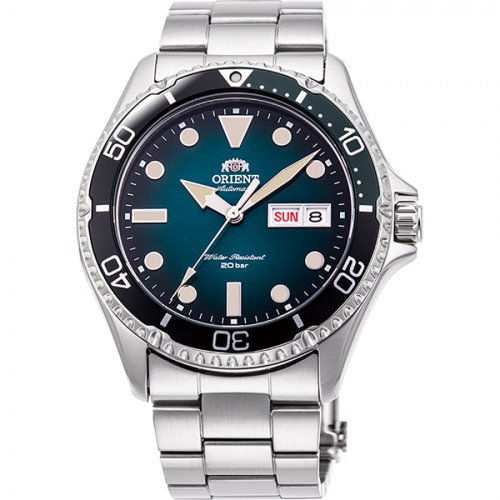
Orient Kamasu II
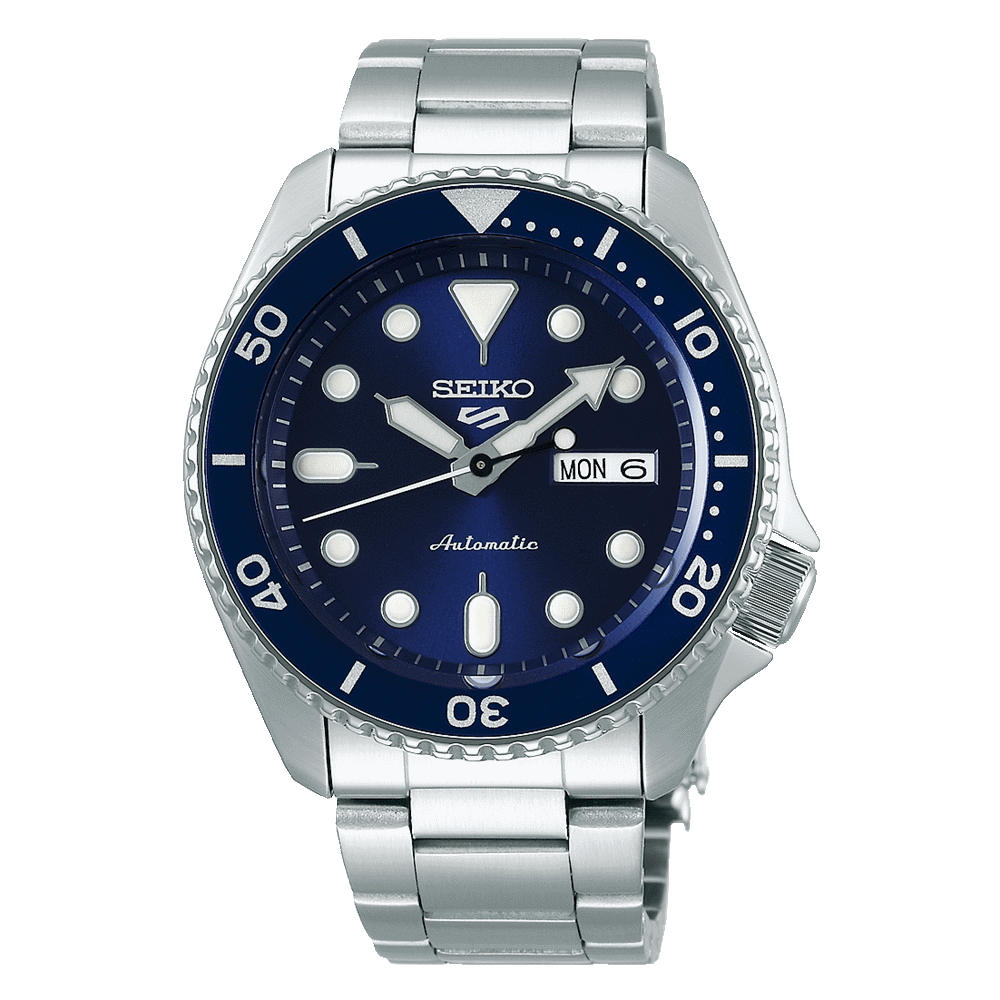
Seiko Sports 5
The Orient Kamasu and Seiko 5 Sports collections are popular choices for those seeking affordable yet high-quality automatic watches. While both brands offer distinct styles and features, they appeal to different segments of the market.
The Orient Kamasu is typically priced between $200 and $350, positioning it as a mid-range option in the budget-friendly segment. The Seiko 5 Sports collection, meanwhile, is generally priced from $100 to $300, with some models potentially reaching slightly higher depending on the specific features and design.
Both the Orient Kamasu and Seiko 5 Sports are equipped with in-house automatic movements, reflecting their manufacturers’ commitment to self-sufficiency and quality. The Kamasu uses the Orient Caliber F6922, which offers hand-winding and hacking capabilities, allowing for precise time-setting. This movement is known for its reliability and has a power reserve of approximately 40 hours.
| Characteristic | Orient Kamasu | Seiko 5 Sports |
| Water Resistance | 20 bar | 10 bar |
| Crystal | Sapphire | Hardlex |
| Movement | F6922 | 4R36 |
| Price | $200-$350 | $250-$450 |
Seiko 5 Sports models are typically powered by the Seiko Caliber 4R36 movement, which also features hand-winding and hacking, along with a similar power reserve of around 41 hours. The 4R36 movement is widely appreciated for its robustness and ease of maintenance, making it a staple in Seiko’s lineup of accessible mechanical watches.
The Orient Kamasu is recognized for its solid build and dive watch features, including a unidirectional rotating bezel and a 200-meter water resistance rating. It also comes with a sapphire crystal, which is a notable upgrade over the mineral glass found in many watches at this price point. The Kamasu often features a day-date complication, a striking dial with applied indices, and excellent lume, making it both functional and aesthetically appealing for divers and casual wearers alike.
The Seiko 5 Sports collection is broader in scope, offering a wide range of designs that cater to various tastes, from sporty and rugged to more subdued and classic styles. While not typically marketed as dive watches, many models come with 100-meter water resistance and a robust case design. The Seiko 5 Sports often features a Hardlex crystal, which is more durable than standard mineral glass but not as scratch-resistant as sapphire. The collection is known for its reliability and versatility, making it a popular choice for everyday wear.
FAQ
Orient appeals more to those starting their watch journey or seeking budget-friendly mechanical watches, while Seiko caters to a broader demographic, from entry-level buyers to high-end collectors. Both brands, however, share a common dedication to quality and innovation, making them staples in the world of horology.
Does Seiko own Orient?
Yes, Seiko does own Orient. Orient Watch Co., Ltd. is a subsidiary of Seiko Epson Corporation, which is part of the larger Seiko Group. Seiko Epson acquired a controlling interest in Orient in 2001 and later fully integrated the company in 2009. This integration brought Orient under the Seiko umbrella, allowing it to benefit from Seiko’s extensive resources and technological advancements while maintaining its own distinct brand identity and product lines .
Is Orient better than Seiko?
Whether Orient is better than Seiko depends on individual preferences and what aspects are valued most. Orient generally offers excellent value for money, particularly in affordable mechanical watches, while Seiko provides a broader range of options, including more high-end and technologically advanced models. Both brands have their strengths and cater to different market segments, so the choice often comes down to personal preference and budget.
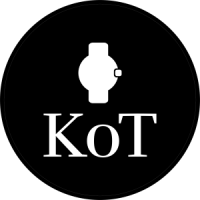

Leave a Reply